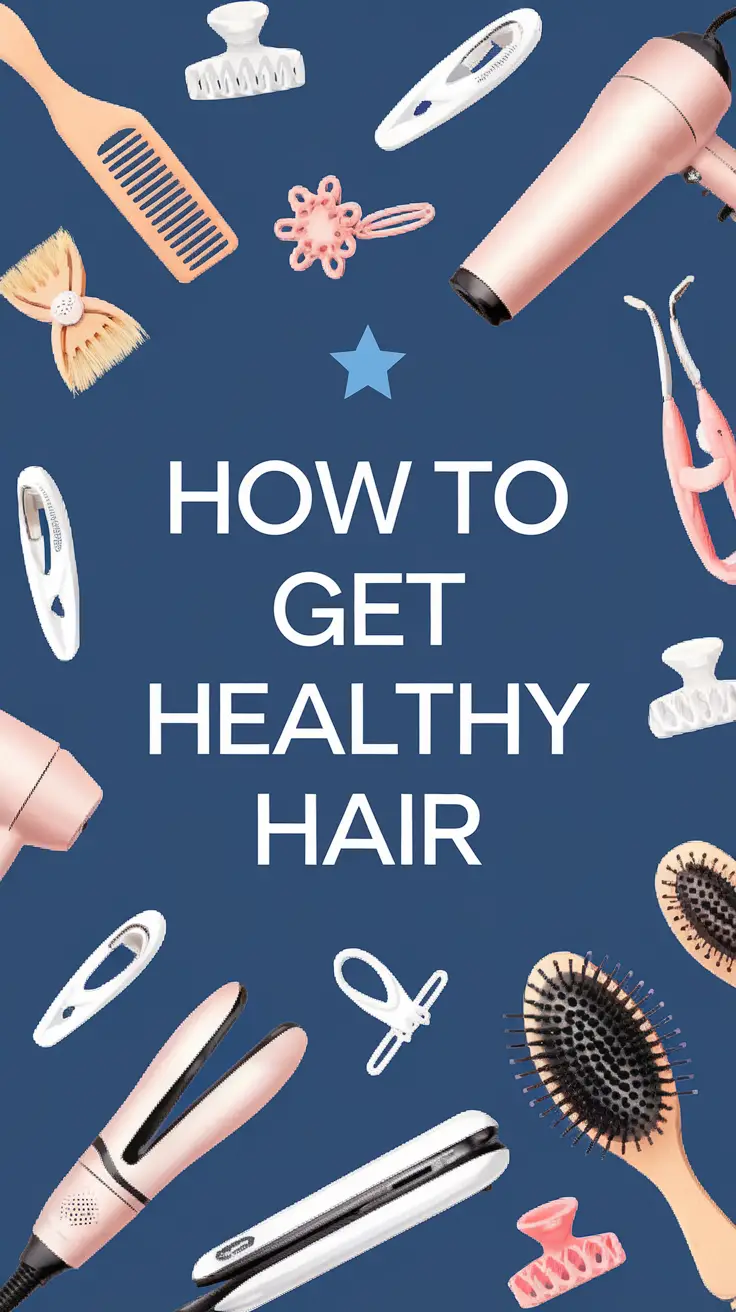Achieving healthy, beautiful hair has been a personal journey for me—one that involved a lot of learning, trial, and dedication. Along the way, I’ve discovered what truly works for hair health, from nutrition and care routines to understanding hair types and debunking myths. In this guide, I’ll share everything you need to know to transform your hair.

Why Hair Health Matters
Healthy hair isn’t just about appearance; it’s a reflection of your overall well-being. Strong, shiny, and resilient hair requires a balance of good nutrition, gentle care practices, and understanding your unique hair needs.
Let’s break it all down step by step.
Nourish Your Hair from the Inside Out

Essential Nutrients for Hair Health
Your hair needs the right building blocks to grow strong and healthy. Here are the key nutrients and where to find them:
| Nutrient | Benefits | Food Sources |
|---|---|---|
| Protein | Strengthens hair structure | Eggs, fish, chicken, lentils |
| Vitamin A | Promotes scalp health | Carrots, sweet potatoes, spinach |
| B Vitamins | Biotin supports growth | Whole grains, nuts, avocado |
| Vitamin C | Aids collagen production | Citrus fruits, bell peppers |
| Vitamin D | Supports follicle health | Sunlight, salmon, fortified foods |
| Vitamin E | Protects hair from oxidative stress | Almonds, sunflower seeds |
| Iron | Prevents shedding | Red meat, spinach, lentils |
| Zinc | Aids tissue repair and growth | Pumpkin seeds, beans, nuts |
| Omega-3 Fatty Acids | Keeps scalp hydrated | Fatty fish, flaxseeds, walnuts |
Tip: If you struggle to get these nutrients through diet, consider consulting your doctor about supplements like biotin or omega-3 capsules.
Understand Your Hair Type and Porosity
Knowing your hair’s type and porosity helps you tailor your care routine.
Hair Types
| Hair Type | Characteristics | Care Tips |
| Straight Hair | Prone to oiliness | Use lightweight, clarifying products |
| Wavy Hair | Combination of straight and curly | Use light creams or mousses |
| Curly Hair | Dry and prone to frizz | Deep conditioning and moisturizing |
| Coily Hair | Most fragile; prone to breakage | Use oils, protective styles |
Hair Porosity
Porosity refers to how well your hair absorbs and retains moisture:
- Low Porosity: Hair repels water. Use lightweight oils like argan or jojoba.
- Medium Porosity: Balanced; hair responds well to most products.
- High Porosity: Hair absorbs moisture but loses it quickly. Use heavier creams and butters.
How to Test Porosity: Drop a clean hair strand in a glass of water:
- Floats = Low porosity
- Sinks slowly = Medium porosity
- Sinks quickly = High porosity
Adopt a Healthy Hair Care Routine

Here’s a practical routine tailored for any hair type:
Daily Routine
- Gently detangle your hair with a wide-tooth comb.
- Hydrate ends with a few drops of lightweight oil.
Weekly Routine
| Step | Task |
| Wash | Use sulfate-free shampoo |
| Condition | Apply conditioner mid-length to ends |
| Deep Condition | Use a hydrating mask weekly |
| Scalp Massage | Stimulates blood circulation |
Monthly Routine
- Clarify: Use a clarifying shampoo to remove buildup.
- Trim: Schedule a trim every 8-12 weeks to prevent split ends.
Heat Styling Tip: Limit heat tools. If you must use them, always apply a heat protectant spray.
Try Natural Remedies for Hair Health
Sometimes the best solutions come from your kitchen! Here are a few effective DIY remedies:
DIY Hair Masks
- For Dry Hair: Mix 1 ripe avocado, 1 egg yolk, and 1 tablespoon olive oil. Apply for 30 minutes and rinse.
- For Damaged Hair: Combine 2 tablespoons coconut oil with 1 tablespoon honey. Leave on for 20 minutes.
Herbal Rinses
- Apple Cider Vinegar Rinse: Balances pH and removes buildup. Mix 1 part ACV with 2 parts water.
- Green Tea Rinse: Reduces shedding and soothes the scalp.
Consider Hormonal Balance
Hormonal imbalances can trigger hair issues such as thinning, breakage, and shedding. Factors include:
- Thyroid Disorders
- Polycystic Ovary Syndrome (PCOS)
- Pregnancy or Menopause
When to See a Doctor: If you notice sudden hair loss, excessive shedding, or bald patches, consult a healthcare professional to rule out underlying conditions.

Avoid Common Hair Care Mistakes
Many hair care myths can sabotage your progress. Let’s debunk a few:
- “Washing daily is bad for your hair”: It depends on your scalp. Oily scalps may need daily washing.
- “Cutting hair makes it grow faster”: Trims prevent split ends but don’t speed up growth.
- “Expensive products work best”: Focus on ingredients, not price.
Ingredients to Avoid:
- Sulfates (strip moisture)
- Parabens (preservatives)
- Alcohols like isopropyl alcohol (drying)
Conclusion
Achieving healthy hair is a holistic process that combines proper nutrition, understanding your hair’s needs, and following a consistent care routine. By incorporating these practices, you can transform your hair’s health, strength, and shine over time.
Start small, be patient, and listen to your hair. Healthy hair is within reach for everyone!
Frequently Asked Questions
1. How often should I wash my hair?
It depends on your scalp type. Oily scalps may need washing every other day, while dry hair can go longer between washes.
2. Can diet really affect hair health?
Yes! Nutrient deficiencies can cause hair loss and breakage. Eating a balanced diet is key.
3. What oils are best for hair?
Coconut oil, argan oil, jojoba oil, and castor oil are excellent for hydration and shine.
4. How can I test my hair porosity?
Drop a hair strand in a glass of water. If it sinks quickly, you have high porosity.
5. How do I stop split ends?
Regular trims, proper conditioning, and minimizing heat styling prevent split ends.
6. Are natural hair masks effective?
Yes! DIY masks using avocado, honey, and coconut oil can hydrate and repair hair naturally.
